Items
Tag is exactly
socioeconomic
-
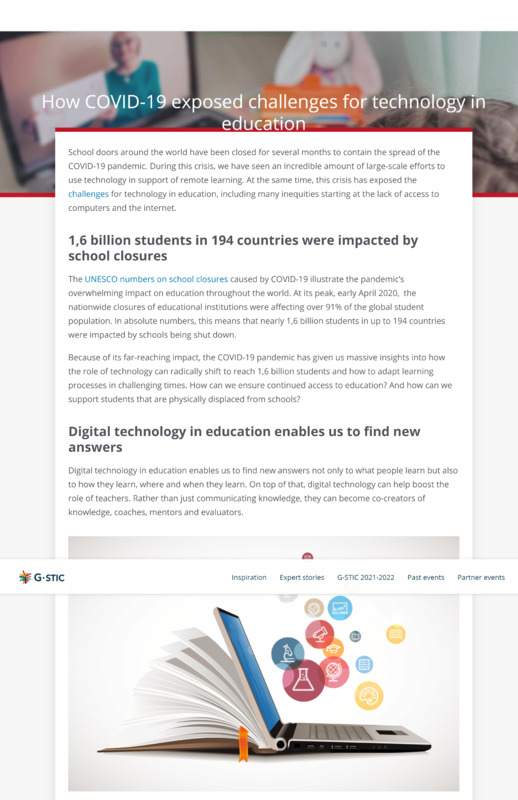 2020-06-01
2020-06-01How COVID-19 exposed challenges for technology in education
The article addresses how challenges in access/use of technology by students and teachers have been highlighted due to the pandemic -
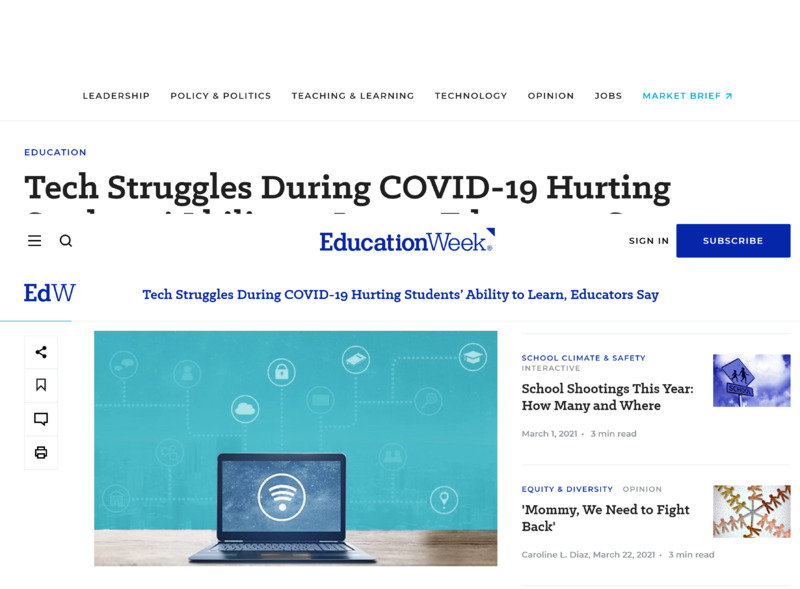 2020-09-24
2020-09-24Tech Struggles During COVID-19 Hurting Students’ Ability to Learn, Educators Say
This article comes from the perspective of educators who struggled with teaching students remotely, and includes statistics referring to students who had technology/situational issues that affected their work. -
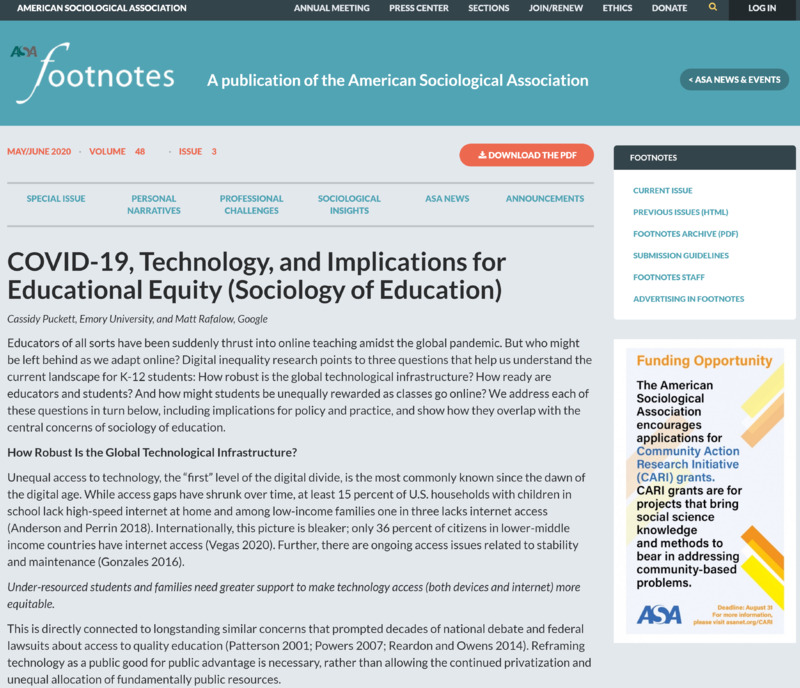 2020-05-19
2020-05-19COVID-19, Technology, and Implications for Educational Equity (Sociology of Education)
This article addresses the divide between students who had easy access to technology/digital skills during the pandemic, and how it came into play in regards to grades -
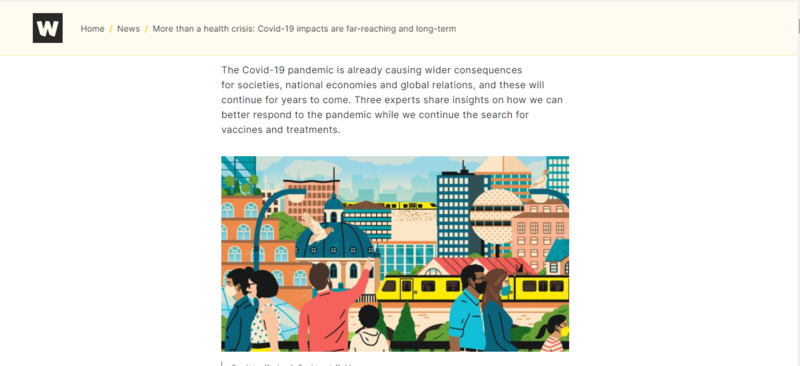 2020-08-26
2020-08-26Unintended Consequences
Devi Sridhar from the London School of Economics covers some things we don't think about when we think about consequences of the pandemic. She compares outbreaks to black holes, as society focuses attention to the pandemic, other priorities are put to the side. Juliet Bedford talks about the vulnerabilities of poorer communities. This interview covers lots of unintended consequences and outcomes of the pandemic. -
 2020-08-21
2020-08-21How Indonesia's Education System Is Faring
"Since March 2020, students, parents, and teachers in Indonesia have been grappling with school closures affecting 62.5 million students from pre-primary to higher education." With such a socioeconomically diverse population, it's difficult to gauge just how accessible isolated learning would really be during the pandemic. The Ministry of Education and Culture had to move quickly to assure that there was some structure and guidelines set in place for educational institutions to follow. Unfortunately, as internet access isn't quite the common luxury many households have, the ministry sought partnership with television programming stations. This was to, at least, provide educational material to those who have access to televisions but not internet. The article goes on to provide four ways in which they hoped would assist in the growing education deficiency. 1) Develop more solutions to reach students without internet access; 2) Increase connectivity and train teachers to deliver more effective and interactive online learning; 3) Identify and support those falling behind with differentiated instruction; 4) Support disadvantaged students to return to school. -
2020-11-09
HIST30060
1. The Trump family contracting Covid When my friend first texted me about Donald and Melania Trump contracting Covid-19, I let out a hysterical laugh. To me, it wasn’t Trump, the person, contracting the virus that was funny but rather Trump, the one who belittled the effects of the virus and avoided taking meaningful measures to minimise its impact, that was funny. It was a stark reminder that boundaries between the powerful and the powerless, between the wealthy and the disadvantaged, between the authorities and the ones subject to authority, between varying socioeconomic standings can be blurred, especially in the case of a global pandemic. While pandemics have an undeniable impact on the disadvantaged or those with lower socioeconomic means, its impact on a figure such as Trump somewhat demonstrated that no one is beyond a virus. 2. Stigmatising Migrant Communities in Victoria When the second outbreak unfolded in Victoria, it was really interesting to, firstly, see the socioeconomic inequalities come into light and, secondly, the Victorian migrant communities framed as the problem. They were projected to be the cause of the second outbreak in Victoria which prompted the media to monopolise on this racist and bigoted rhetoric of migrants causing trouble. The media and some members of the public (through social media) insinuated that migrant communities’ culture was, by default, antithetical to the Australian way of life and thrust Victoria into another lockdown. It later became clear that the Victorian government’s hotel quarantine disaster prompted a second outbreak. The security personnel and other staff employed by the Victorian government spread the virus to a handful of postcodes in Victoria. The areas where the outbreaks first began to emerge were areas with lower socioeconomic standing and migrant communities. Considering that these staff members were from these postcodes, the outbreak seemed to be prompted and furthered by the migrant culture which supposedly allowed for the flouting of restrictions, mass gatherings and, therefore, quick local transmission of the virus. The wealthier suburbs or postcodes weren’t hit as hard. Thus, demonstrating the existing socioeconomic inequalities in Victoria and the way in which some communities were hit harder than others. It was striking to see how easily a community can be framed and dismissed as the other and the troublemaker. Additionally, this may speak to the debates or concerns which are left outside the national discussion which, in turn, can contribute to a specific historical record based on the dominant narrative. In Victoria’s case, perhaps this can be the more general covid lockdown narrative which for the average Victorian is divorced from any ethnic implications whilst for other Victorians, the connotations associated with their ethnic identities, particularly in the context of the covid pandemic, is warped and bigoted. 3. Burqa vs. facemask hypocrisy – facemasks can become the normalcy but burqa’s never will With the introduction of the coronavirus restrictions around the world, it was interesting to see the discourse around face-covering change, particularly, in the West. For about two decades, following 9/11 in America, there has been negative messaging around the burqa some Muslim women choose to wear. It was deemed socially unacceptable and antithetical to societal norms or appropriateness. Muslim women have been subjected to vilification and have been told that the burqa limits communication and is a symbol of an anti-western patriarchal tradition. There seems to be a hypocrisy around this issue in that while a health concern can normalise a face covering, religious reasoning seems insufficient. While the historical baggage associated with the burqa far surpasses this debate of covering versus revealing the face and, of course, while the health benefits of a face mask is of great importance, there is room to view it with a somewhat binary approach. Put more plainly, it seems while the health implications of any form of face covering or clothing items can allow officials to impose policies around mandatory face covering, religion or, more importantly, freedom of choice, does not offer enough of an incentive for officials to consider burqas as societally and socially acceptable. I believe the policies begat from health concerns are of prime importance. However, these policies can coexist alongside policies of acceptance. Thus, the reframing of societal norms to accommodate for another’s interpretation of their religious obligations. 4. Family member in hospital during Covid With the Covid pandemic, 2020 is probably one of the worst years to approach a hospital in any way. My family and I were unfortunate to have experienced a situation (not Covid-19 related) which required us to rush a family member to the hospital. I found that it was one of the hardest things I have had to cope with throughout my life. This is a photo of my family member’s patient wristband. As nurses in the emergency were asking one another about whether the incoming patients were swabbed for covid, the added difficulties of this situation were clear. The limited contact I was able to have with my family member due to the hyper alert covid environment at the hospital deeply frustrated me. These were perhaps the organic happenings of life, however, not having the option of being beside my family member and only seeing my family member for 2 hours in a day was tormenting. It was also a reminder of how varied the experiences of the lockdown and restrictions could be. Alongside the general difficulties of the pandemic and the lockdown, there could be added layers of complexity which may range from living arrangements, work, race, socioeconomic status to, in our case, an unexpected health condition. 5. TikTok dance Similar to the millions of others out there during the lockdown, I had my fair share of busting some dance moves on TikTok with my house mate. This made me appreciate the little fleeting moments of happiness even in a very grim-looking world with the virus ravaging communities across the globe. Making this video, learning the dance moves and continuously getting the moves wrong was the most upbeat, thrilling and enjoyable fun I had during quarantine. Also, given that I thought I would never use TikTok, I somewhat understood the solace most of its users found in the app, especially, more than ever, during a global pandemic. -
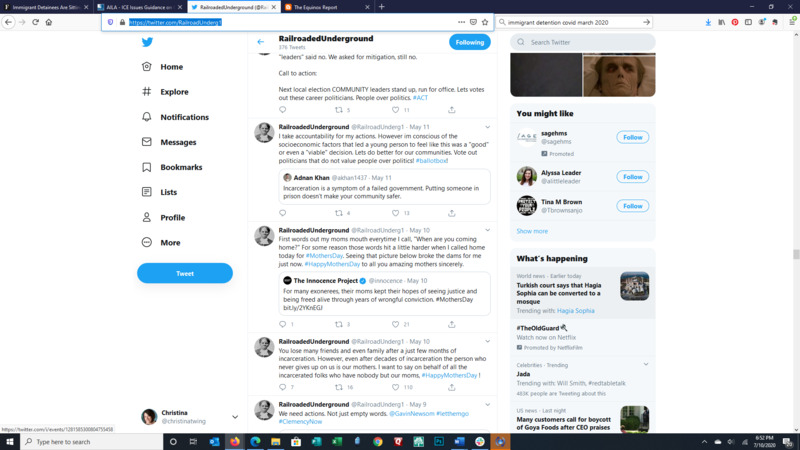 2020-05
2020-05Tweets from Inside a Prison 5/10-5/16/2020 by Railroaded Underground
These images show the Tweets of an incarcerated person utilizing a contraband cell phone to let the outside world know about prison conditions during the pandemic. This week he talks about how mother's are the ones that never give up, Mother's Day, justice, socioeconomic factors that lead to prison, death, politicians, voting, lethal injection, and the words of a six year old child.
